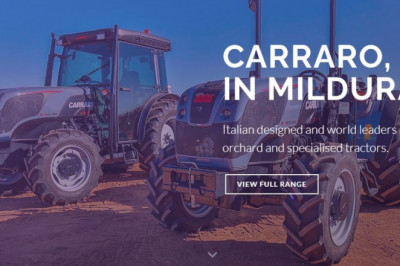views

As we approach celebratory days, we overlook employees that are not so happy & feel further away from the community. Read to know how appreciation can help with this.
There were times when we would go to the nearest café with our colleagues after shift to just relax and get over the day’s frustration or celebrate achievements. Times when we would all gather in the break room, bundle up in front of the TV, and cheer for our favorite team in a really tense football match. Even times when a simple coffee break would become a way to meet your friends and colleagues from other departments. But with remote work, now the only work partner we have are our laptops. The turmoil that elimination of such small instances has taken is beyond imagination. Our mental health has definitely taken a tool, but we have also lost touch with the ‘bigger than me’ element of our lives aka the community.
Being distant with the community aspect of our lives is making us less appreciative of the work happening around us and the people that are actually getting those things done. It is not a secret that we are social animals and strive for recognition in the society, but with the virus taking over our personal and professional lives, the lack of appreciation at the organization is growing day by day. Employers are laser focused on getting back in the game and winning it over, while employees are out there putting in hours and hours of work with very little to no appreciation.
While the macro issues are highlighted in front of our eyes, organizations are failing to look at the elemental and pixelated scenario of how things are affecting their workforce. Christmas and New Year are almost here, but so is the pandemic. Which basically means that there will be no social gatherings and communal celebrations, which used to be one of the most awaited events for many of the employees.
So, what can you as an organization do to ensure your employees are appreciated and feel a sense of belonging to the firm amidst the pandemic and ‘no celebration’ doom?
We have a couple of thoughts on this situation by Dr. Laura Hamill, Chief People Officer and Chief Science Officer at Limeade. Let us look at what she has to suggest.
The first thing that Dr. Laura wants organizations to do is to remove any bad or unfair feelings towards the issues. In her words, “Remove stigma – communicate to employees that the holidays aren’t all good tidings and cheer – it can be an incredibly challenging time for people.”
Festivals can be tough for a lot of people because of multiple reasons. We always see celebratory content and spread of positive thoughts to get into the holiday spirit, but hardly ever we have seen companies actually acknowledging the fact that this could also be a difficult time for employees that are dealing with several issues.
Pandemic or not, it is time for firms to remove the stigma around not so happy holidays and actually have open conversations with the employees about their feelings and emotions.
This year many organizations did realize that the current climate has been harsh on the mental health of their workforce and put measures, initiatives, programs, and benefits in place, so that their employees could utilize them to the fullest and feel better. A lot of hrtech solutions made a mark in the industry for empowering employees to speak about their issues and health conditions to inculcate a sense of care between the workplace and the workforce. The step that the industry took to go an extra mile and help their employees come to terms with their health is commendable. But employees still need motivation. As Dr. Laura says, “Taking care of your mental health is incredibly important during this time. We are encouraging employees to use our benefits – including our partners (Whil, meQuilibrium) and our Employee Assistance Program for additional support and communicating about these and other benefits regularly.”
One feeling that is often overlooked and even laughed at when spoken about out loud is the feeling of loneliness. Quite a number of people are out living on their own, far from their families and friends, making this particular time even more difficult to deal with. There are also employees that relied on their workplaces to make associations and friendships, and now are in despair.
“Many single employees are struggling with loneliness at this time of year. Employers can encourage casual virtual hangouts (some of our employees simply log onto Teams and work simultaneously, without having a formal meeting), a fun team gathering (virtual escape rooms or a virtual paint and sip event) as ways for folks to get some low key social time.” – Dr. Laura.
Just virtually working with a work-buddy at the screen seems like a great idea to not feel as lonely. Encourage your employees to have after work gatherings on their digital platforms and catch up the same way they would do after work at a café.
One of the Googlers (a full-time Google Corporation employee) Christian Gijtenbeek built something known as the ‘mood collector’ that gives real-time updates about the mood of Christian’s colleagues, displayed on a LED figurine allowing people to check-in with each other and act as a conversation starter. A great innovation that came out of a real-life problem!
While companionship with workmates is important, it is also equally significant for the management to understand that these are some unprecedented times that are actually quite heavy on a lot of their employees.
Not having management empathy can make the employees feel unvalued at the organization, in turn making them reluctant to stay there for a longer term.
Dr. Laura suggests, “It’s important for leadership to explicitly recognize just how hard this year has been and name that the emotional well-being of employees is a high priority for the company. Create space to share resources and techniques for self-care (meditation apps, favorite at-home workouts, best podcasts for listening by the fire, etc.)”
Many organizations conduct CSR activities as their way of giving back to the society, and many of them do it with participation from their employees.
“Collaborate as a company on a philanthropic project – like supporting an organization for the holiday season. This kind of giving can be positive for mental health and can be a way for employees to bond, too.”
Microsoft and its employees show their dedication to make a difference in the world by contributing their time, effort and money to two specific initiatives called ‘Microsoft employee giving program’ and ‘Hack for Good’.
Microsoft Employee Giving Program – This is a program where Microsoft matches dollar for dollar up to $15,000 per employee and matches $25 dollar per hour of the volunteered time. The company and employees together have donated $221 million (inclusive of company match) to nonprofits and volunteered more than 750,000 hours this year.
Hack for Good – Hack for Good (a part of the employee giving campaign) is a community of Microsoft employees who want to use their technical and professional skills to help solve the world’s greatest societal problems. Microsoft encourages employees to collaborate with nonprofits to create new solutions for real challenges they are facing. To enable that, the company provides resources to nonprofits to help them learn more about hacking, scoping projects, and how to pitch their ideas.
The company uses the knowledge and giving back attitude of its employees to bring reformation to the society as well as engage its employees.
Such projects not only bring the community closer, but also brings the workforce together.
Technology can empower us to innovate, build, and automate things. But, to form and be a part of the community, is something that needs to start from within. It is now time for organizations to build on their humane strategies stack, and make empathy a part of their community, and what better than a blend of appreciation and community building?
For more such Updates Log on to www.hrtechcube.com












